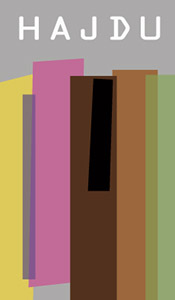


Every now and then someone will ask me if I have a favorite type of wine. I don’t—different occasions, different seasons and different foods call for different types of wine—it would be so hard to pick just one type. However, when I think about all of my annual wine tastings, the two that I most look forward to are my December tasting of the new crop of kosher Champagnes and my May tasting of the new crop of kosher dry roses.
Rose (pronounced roe-ZAY) is a term used to describe wines in the color spectrum between red and white, from faint pink to dark rose. While occasionally made from a blend of red and white grapes, rose is usually made only from the juice of red grapes, which was allowed only limited contact with the grape skins after the grapes were crushed. Grape juice is always clear, even when it comes from red grapes. The color of a wine comes from the grape skins, and the less time a juice spends in contact with the skins, the lighter in color will be the wine it produces.
While very popular with winemakers, dry roses have not really caught on with the kosher consumer—in part because many consumers associate rose with the semi-sweet blushes (think White Zinfandel) that have dominated the rose market for decades. So virtually every year a few new wineries try their hand at making dry kosher roses, but inevitably, with a few notable exceptions, most of wineries only end up producing rose for a vintage or two.
Last year, in this space, I recommended serving dry roses at Shavous, and I repeat that recommendation again this year. A good rose, served icy cold, is dry, crisp, refreshing and a great accompaniment for a dairy or fish meal. Roses also have a floral color, which will visually complement the traditional Shavuos floral decorations.
At my tasting last week I sampled eight roses, of which six were truly worth seeking out (which may require some effort, since three of those wines are available only directly from the producers). Most rose wines are meant to be drunk young, preferably the year after production, so look for wines from the 2014 or 2013 vintages. I wish you a chag someach.
Domaine du Castel, Rose du Castel, Judean Hills, 2014: One of the best wines in the tasting, this peach-colored blend of 60 percent Merlot, 22 percent Malbec, and 18 percent Cabernet Franc has a bit more body, and a bit more depth than most roses. The nose is redolent of peaches, lychees, and nectarines, with a hint of watermelon, all on a lovely floral background. Look for flavors of peaches, nectarines and honeydew, with notes of cream and citrus on the finish. Well crafted, with a good mineral content, this wine should drink well for at least the next year. Score A- ($28.00 Available at FillerUp Kosher Wines, 174 West Englewood Ave, Teaneck, 201-862-1700)
Covenant Wines, Red C Rose, California, 2014: Also excellent is this blend of Grenache, Syrah, Zinfandel, Merlot and Cabernet Sauvignon. Dark-rose in color, with a light-to-medium body, this wine has a bouquet of cherries, blackberries and watermelon, with a whiff of citrus. Red cherries dominate the flavor with notes of Meyer lemons and tropical fruits. Look for the taste of sour cherries on the finish. Crisp and refreshing, this wine should be consumed within the next year. Score A- ($40. Available direct from the winery, www.covenantwines.com)
Hajdu, Grenache Rose, Clement Hills, 2014: This delightfully crisp rose was made by Jonathan Hajdu, Covenant Wines’ Associate winemaker, who produces a small amount of wine under his own label. Light-peach in color, with a light-to-medium body, this wine has a fruity nose of strawberries, peaches, bananas and tangerines. Look for flavors of oranges, lemons, strawberries, bananas and apples. Drink within the next year. Score B+ ($30.00. Available in limited quantities directly from the winemaker, [email protected])
Don Ernesto, Beret, Napa Valley, 2014: Made by Ernie Weir (a.k.a. Don Ernesto) of Hagafen Cellars, this light-bodied, dark-rose-colored Syrah-based rose has a nose of apples and cherries with just a whiff of beurre noisette. Look for flavors of cherries, raspberries, blueberries and apples, with a strong note of citrus. Dry and refreshing, this wine should be consumed within the next year. Score B+ ($24.00. Available directly from the winery, www.hagafen.com)
Lueria Winery, Rose, Upper Galilee, 2013: A blend of 60 percent Merlot, 25 percent Cabernet Sauvignon, and 15 percent Barbera, this tasty wine has a light body, and a light-rose color. Look for flavors and aromas of raspberries, cherries and strawberries, with a slight green tinge. While no longer as vibrant as it was when first released last year, this wine is still quite enjoyable. Drink soon. Score B+ ($28.00 Available at FillerUp Kosher Wines, 174 West Englewood Ave, Teaneck, 201-862-1700)
Borgo Reale, Rose Wine, Puglia, 2014: This light-bodied, peach-colored wine has a floral nose with elements of peaches and apricots. Look for flavors of oranges and nectarines, with hints of raspberries and cantaloupe. Simple, but well made, crisp and refreshing, this is one of the best budget roses I’ve had in years. Score B/B+ ($12.50 Available at Gotham Wine & Liquors, 2517 Broadway, Manhattan, 212-932-0990)
Please note: Wines are scored on an “A”–“F” scale where “A” is excellent, “B” is good, “C” is flawed, “D” is very flawed, and “F” is undrinkable. Prices listed reflect the prices at the retailer mentioned.
By Gamliel Kronemer









